Mister Cartoon On Art, Tattoos, Streetwear & Classic Cars
The L.A. tattoo legend is branching out with museum exhibitions, sneaker collabs and a new automotive line.
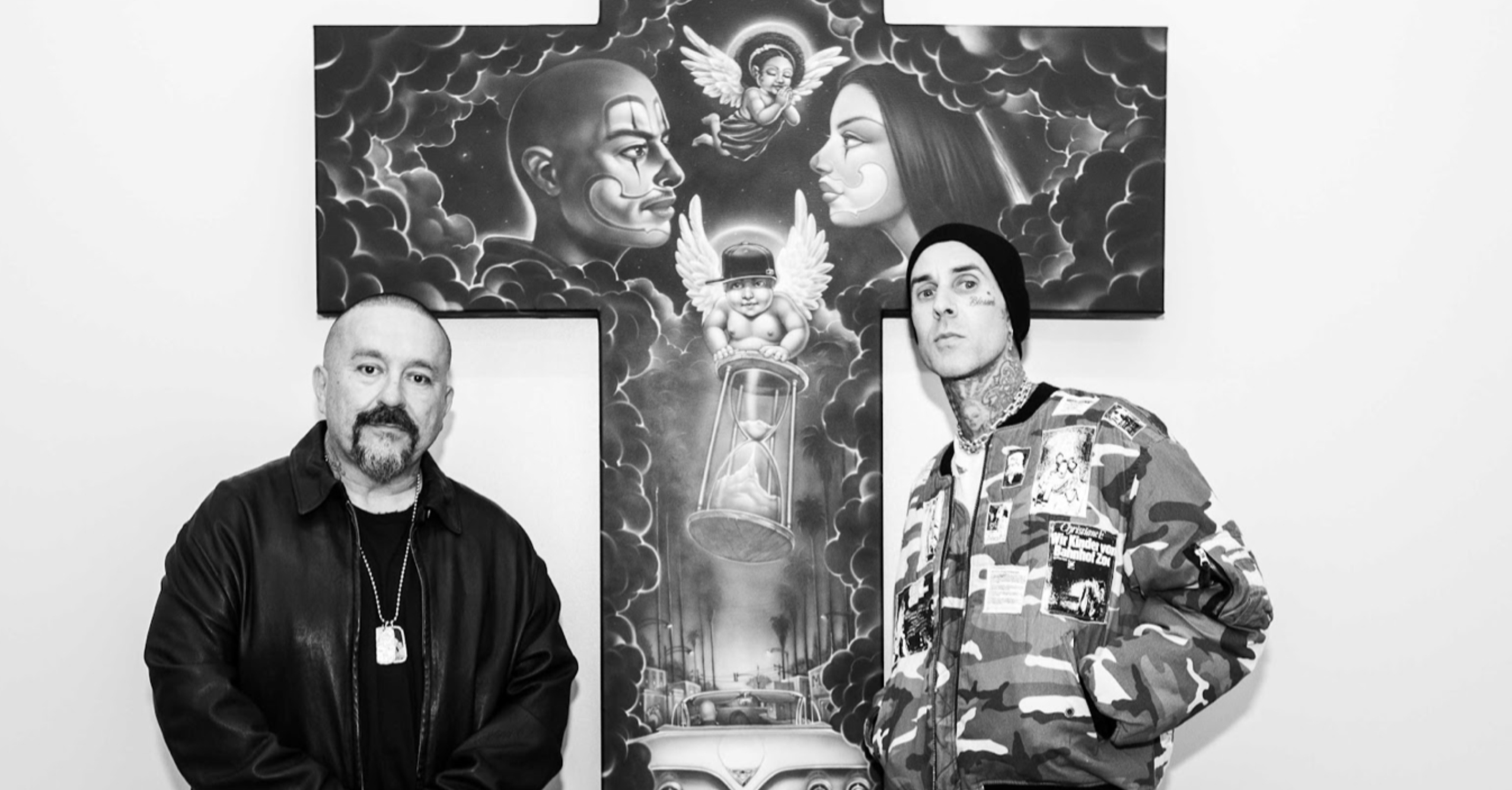
(Mr. Cartoon)
There’s a reason Modelo used one of their multimillion dollar Super Bowl commercials to feature Mister Cartoon. Born and raised in Los Angeles, a young Mark Machado guarded the potent spark of talent and grew it into one of the most important artistic careers — street or otherwise — to emerge from the City of Angels in the 21st century.
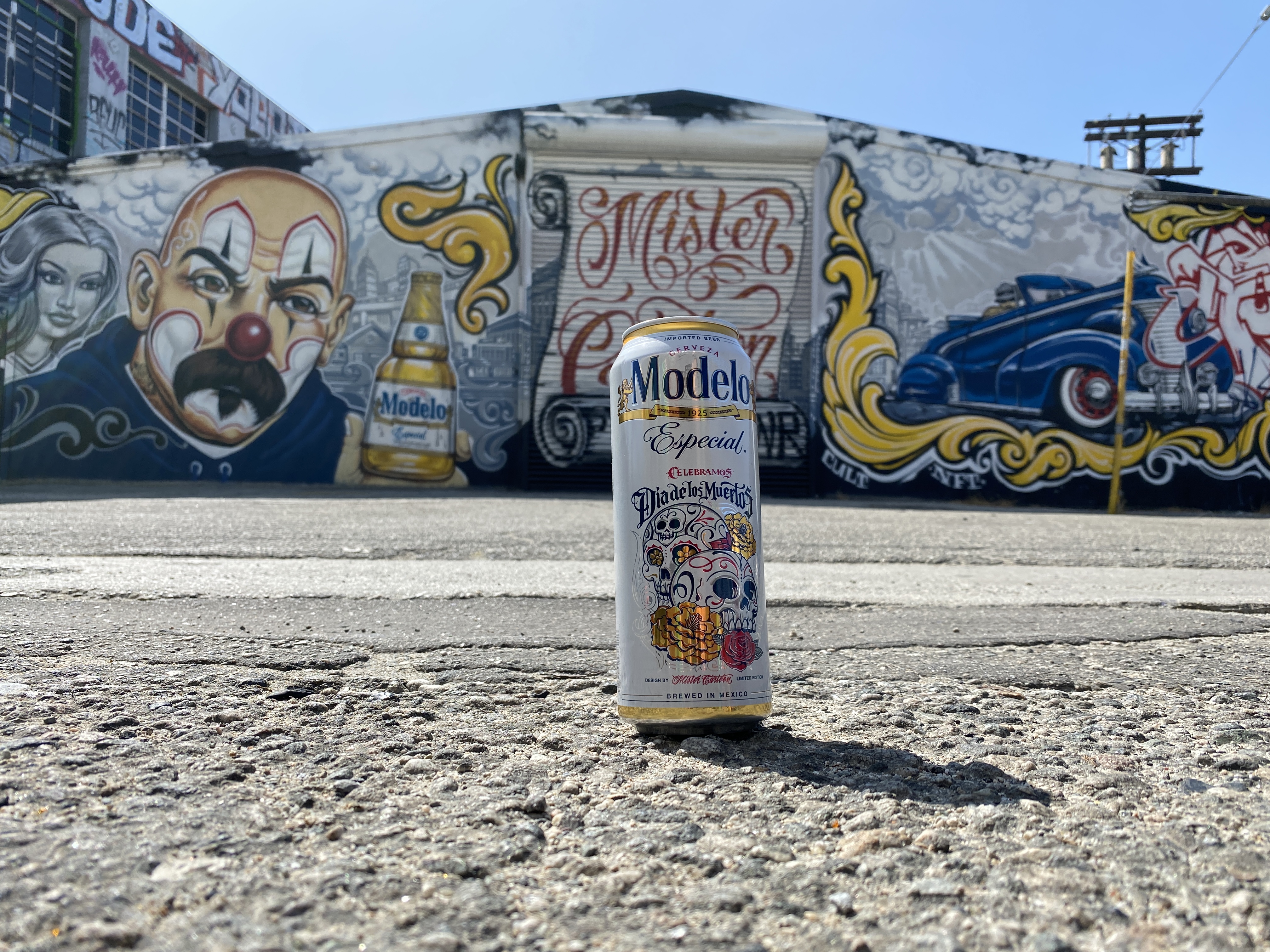
From drawing illustrations for his high school paper to becoming a graffiti king of the South Bay to evolving into one of the most desperately sought tattoo artists of his generation, Mister Cartoon always pioneered his path with authenticity and integrity. From Japan to Europe and across the States, the Cartoon name is met with respect.
Nowadays you can find Mister Cartoon’s art selling at fine galleries for six figures. He starred in the Netflix documentary LA Originals, his recent Beyond the Streets art exhibit was a smash, and his streetwear collections — including limited edition Nike sneakers (tapped to revive the legendary Cortez model) and capsule collections with beloved label Born x Raised — sell out instantly, and can only be found at triple the price tag on the aftermarket.
We recently visited Mr. Machado at one of his studios deep in the San Fernando Valley to hear all about this vibrant Angeleno history, retracing his winding path through the darker and more nebulous edges of the art world. And to discover how his love of vintage cars and all things low rider lead to a new eponymous automotive line dubbed The Art of Car Care.
How did you first start to realize your artistic talent?
I would say the first time maybe my mom noticed something is when I came out in the local Harbor area/South Bay Los Angeles newspaper called The Daily Breeze. They pulled me and a girl out of class — the girl was a mathematician, I could draw — and they took our pictures. My mom was trippin’, you know what I mean?
We didn’t think too much of it other than maybe I was the best artist in my class. By the time I hit high school I was already doing the banners for the school, and was an artist for the high school newspaper. They would tell me a story and I’d just draw characters of that situation. And that’s when I kind of found out that’s my strength.
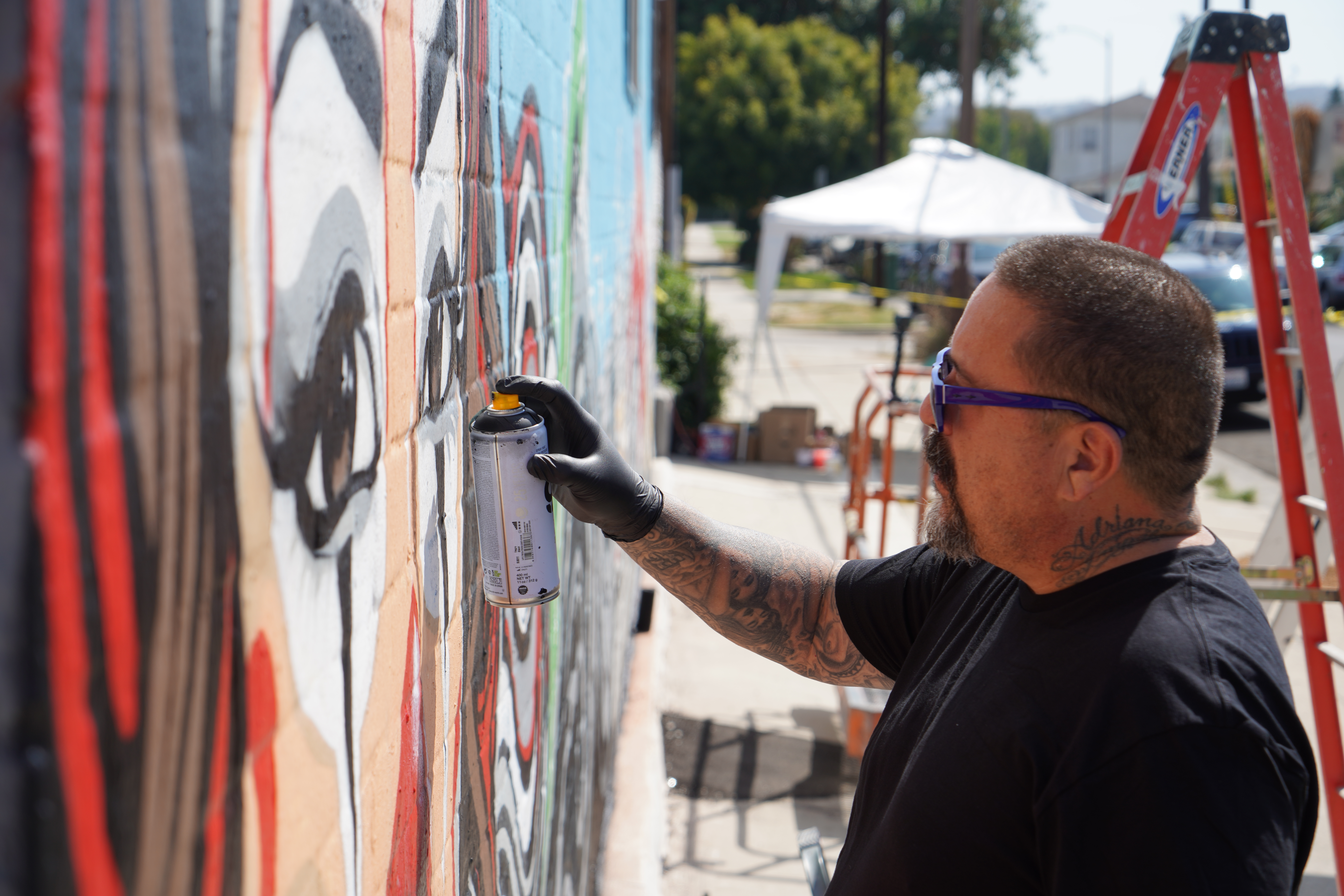
I wanted to push towards it — through hip hop, that makes you push towards your talents. If you’re a good dancer, you’ll probably be a breakdancer. If you draw, you go into graf, so on, DJ or whatever. That pushed me into doing scale walls. I started to fall in love with graffiti.
Once the testosterone kicked in I started reading and writing on the walls and seeing who’s who. And I started to really love East Coast graf here. We didn’t have any access to that, no internet. We knew a couple guys that developed film or Polaroids, that moved from New York over here, and we tried to emulate those guys, put arrows on the end of our letters.
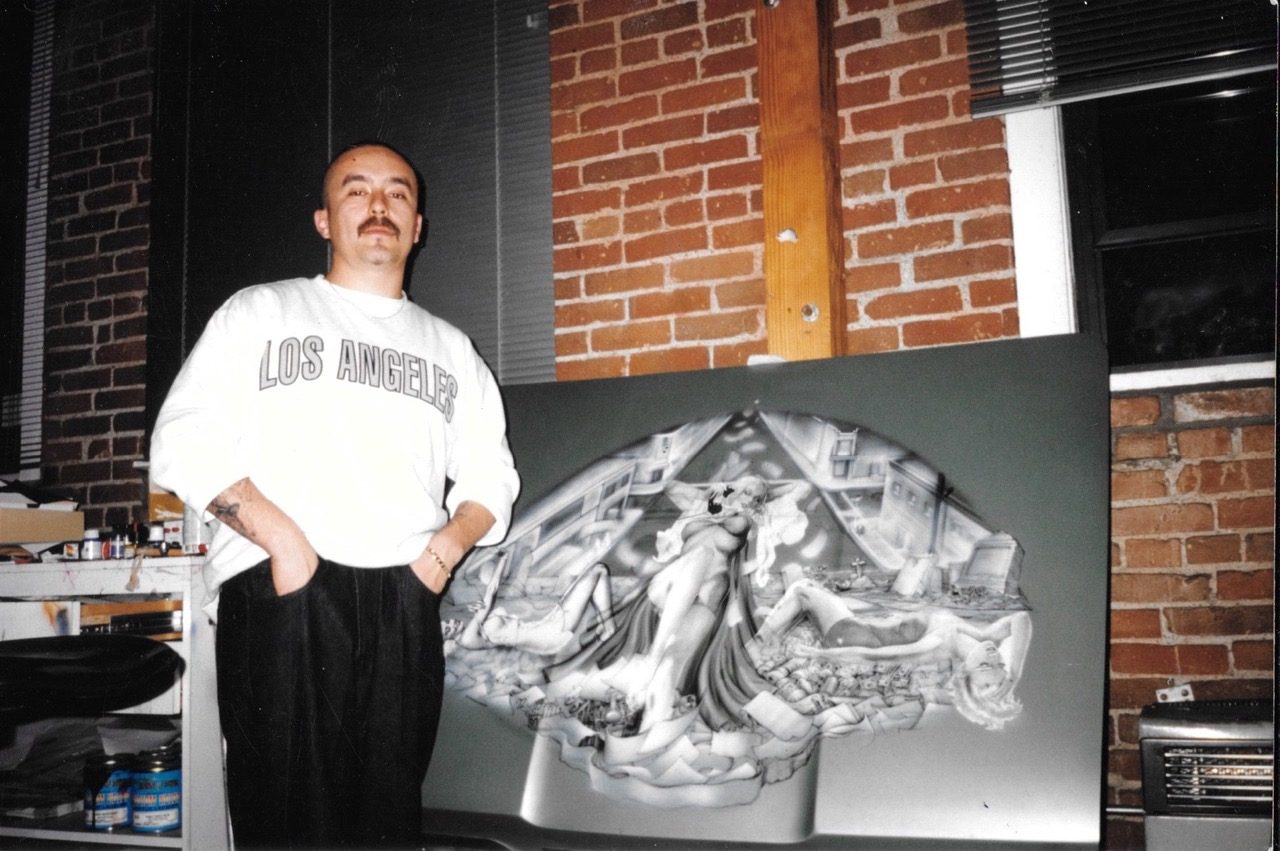
As I got a little bit older I got into sign painting because I had to get a job. So I started airbrushing t-shirts at car shows and swap meets. And I learned how to use a lettering quill and do gold leaf and enamel sign graphics. Like a barbershop window. They were blue collar jobs.
So you moved from pencil and paper to spray can and wall. How did you then begin to commercialize your talents?
Sign graphics changed my whole life, because I would use those techniques that I learned at LA Trade Tech in downtown. I only went one year, but picked up enough knowledge and gear to open up my own business that’s still doing it today.
My big break was I met Eazy-E at a car wash.
We first met about 20 years ago when you were tattooing Redman at Bob Roberts’ legendary Spotlight Tattoo. You already had a little bit of fame then — you were tattooing rappers, EPMD and Eminem by that point. How did you transition from painting signs to inking tats?
Once I started to get the swing of it I started to even learn how to do illustration, logos, I just taught myself. I seen professionals do it and I tried to emulate them. And my mom and father had a mom and pop print shop where I could see camera-ready artwork, and I would emulate that.
My big break was I met Eazy-E at a car wash, and he gave me some tour merch and album covers to do for his groups. So I did MC Ren from NWA’s first solo record, did his logo. And that kind of put me in the record business. Now I’m doing album covers, I’m seeing my stuff at the Virgin Mega Store, back when we had record stores. They’d blow the artwork up then.
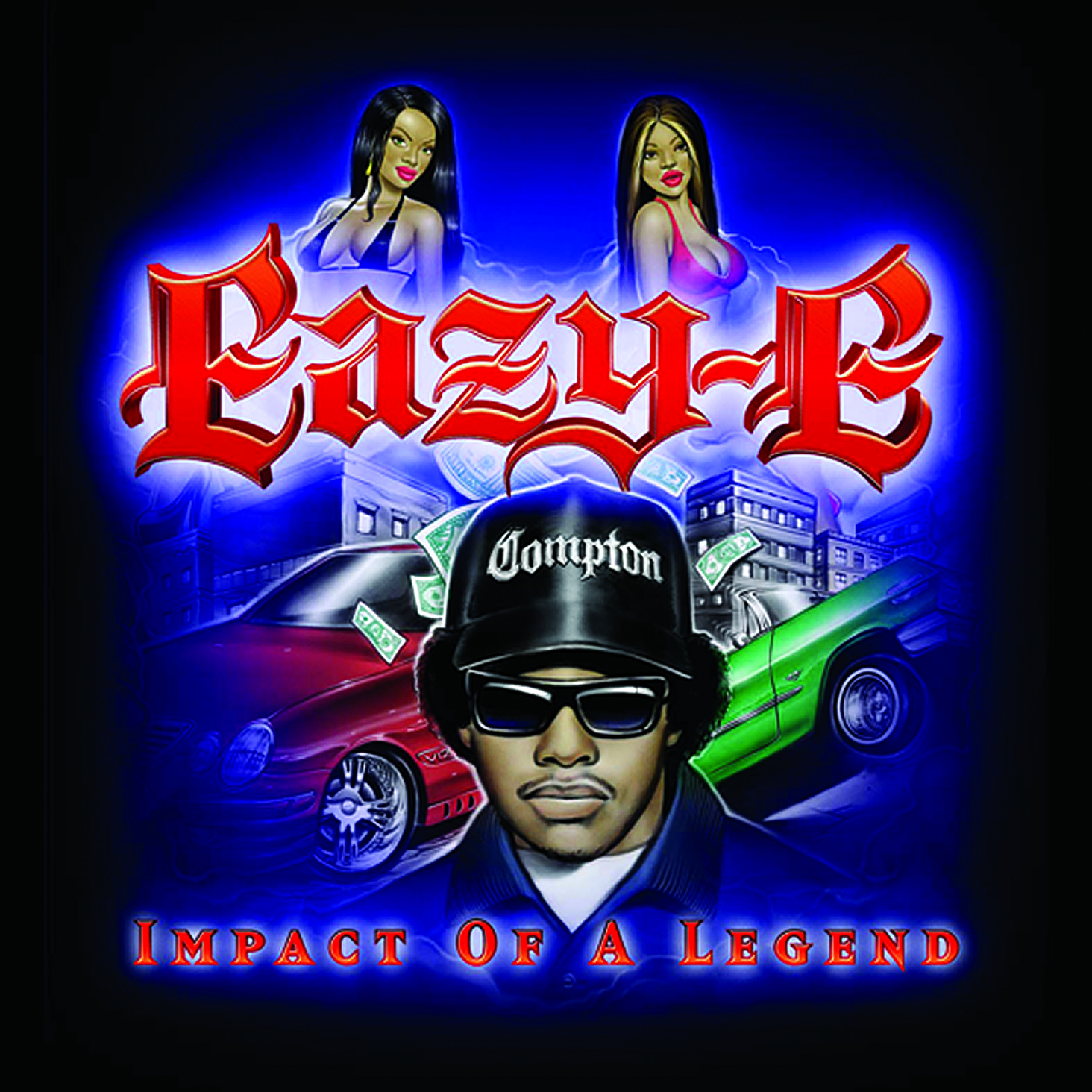
And so now I’m going to Tokyo by the time I’m 22 and they’re looking at the airbrush clothes I’m painting, they’re asking me how long I’ve been designing clothes, and how long I’ve been a fashion designer. And I was like, What? No one ever told me I could be that! You know what I mean? I didn’t know I already was. There was just no streetwear invented yet back then; we were just still trying to figure it all out.
So little by little I started getting tattoos. I started hanging out at Spotlight Tattoo with Charlie Roberts, and these guys were the coolest — they’re in Hollywood, and we were all trying to figure our young selves out, like, Where can we take this? Once I started to get tattoos and submersed myself in it, then I started to get the balls to actually try to do one.
You went from pencil to spray can to enamel, from paper to concrete to glass. You bounced around from medium to medium, which is tricky for some people, but seems like you have an aptitude for that. So was ink just another phase of that evolution?
Yes, exactly: it’s about conquering different surfaces, different textures, and applying your art to different mediums. And skin is the ultimate — it is probably the oldest, right next to someone maybe with a chisel carving on the side of a pyramid. It’s real tribal to us; it’s going to be on there forever, right?
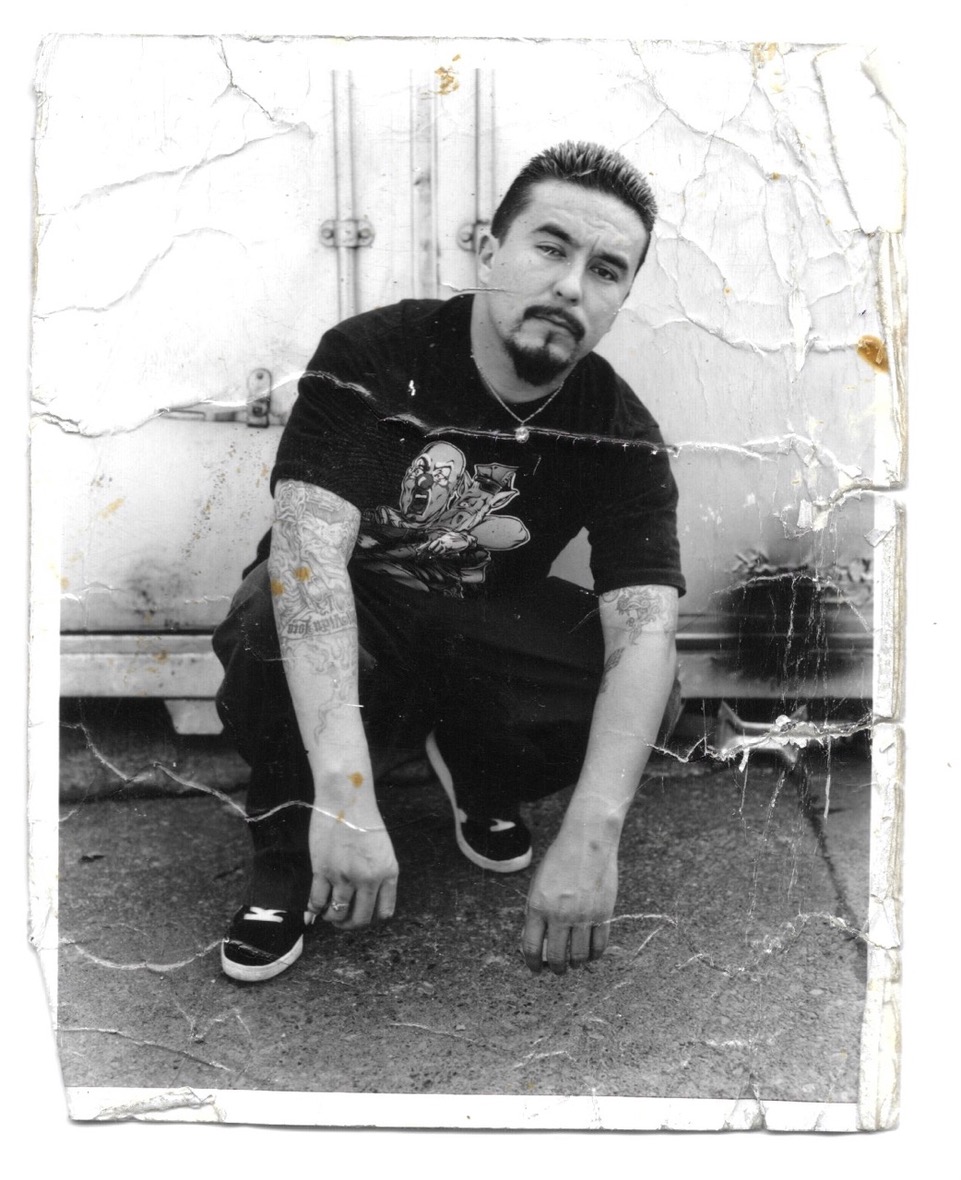
To the box, to the dirt, so we don’t take it lightly. And you have to live in that environment to understand it, to get it. And the only way to learn is by getting them and watching other tattooers tattoo, setting up, tearing down, doing patterns, doing it the hard way, the old school way, and learning how to clean up your shit. Those basics you learn, if you’re lucky.
I know cars have always been a major thread in the tapestry that’s been both your life and your art career evolution, since day one. It’s always run parallel.
My father definitely sparked my love for cars. He grew up in South Tucson, so we’d drive there for holidays and he could name any car. We played the car game, and pops could name any year, any make, any model. And I was amazed, Man, how could he know that? How could he just look at a car and understand?
But what he showed me was that it’s in the body lines, it’s in the trim. You notice the bumpers, notice the grill; it tells the story of the car and lets you know what year it was made. And I started to notice the body lines on cars. I started to fall in love with the whole idea of a moving canvas.
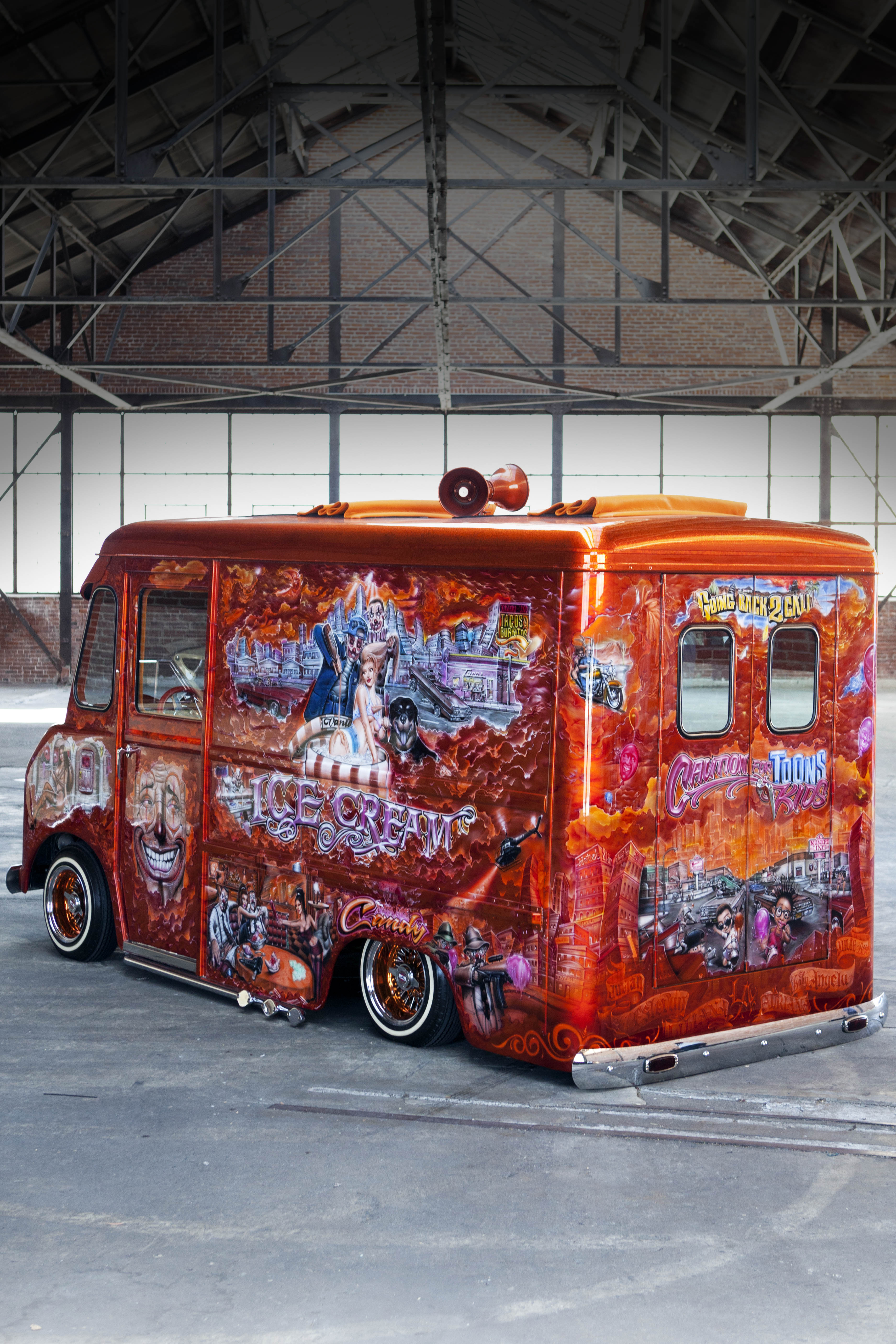
When I seen that a guy could drive around with a woman in a waterfall with a tiger next to her, with faces in the rocks, I thought This is insane — you can have an Aztec princess on the hood of your car?! Man, I want to do that! These guys had tattoos. They had cool, fresh white t-shirts, like all this came together. It was the best dressed, wettest, coolest, shiniest cars.
My dad would take me to car shows, and I’d see an old man, probably 30 at the time, airbrushing t-shirts. And I was like, Man, if that old man can do it, I can do it. And I just think the power of seeing other people do it gave me the confidence to do it. Because you couldn’t learn these art forms in college.
Even though I went to learn sign painting, they didn’t teach pinstriping, they didn’t teach how to spray candies. They didn’t teach those type of things that were more custom culture, that you would have to learn on your own by hanging out in auto body shops.
So your dad’s love of cars inspired this lifelong fascination.
I fell in love with cars at a young age. I would paint portraits of people’s cars on t-shirts, and that’s very similar to tattooing: you can’t make a mistake on a t-shirt, this porous cotton material. Once you put the ink in, it’s in. There’s no erasing it, other than to change up the design. So that was a preparation for me for tattooing down the line, when I was learning how to do things once. I was learning how to make things permanent in one stroke.
I think hanging out in auto body shops, hanging out in tattoo shops, these guys always have fixed up cars. And in California you will be judged by your car, whether that’s shallow or not. That’s how people meet you and that’s how you get around. And we make sleds out of our cars.
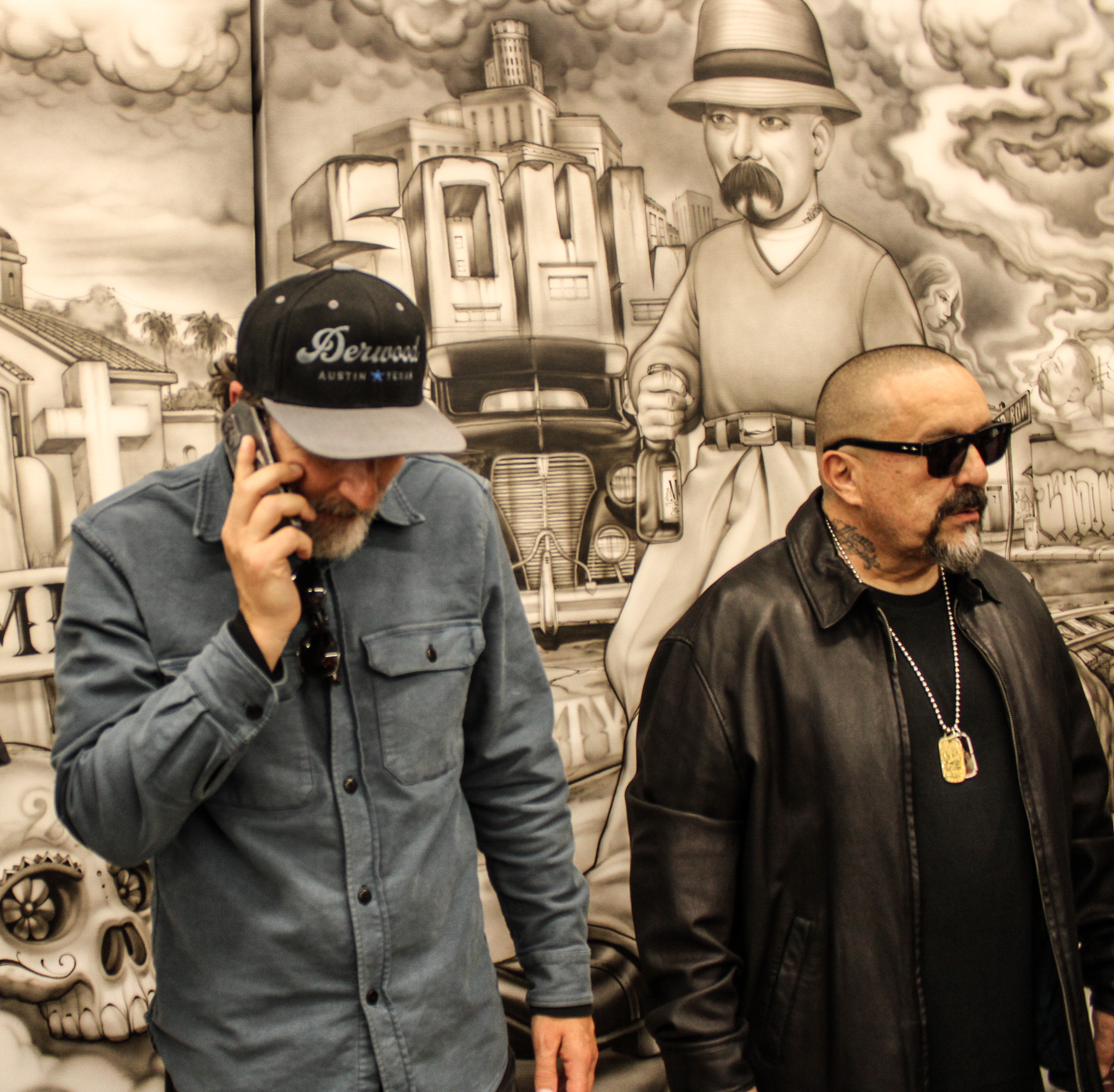
We make candy painted chariots. And when we drive down, people break their necks. And that’s our goal is to make people notice. But sometimes be seen but not noticed, where our paint jobs can be very subtle or they can be wild. [Laughs] Sorry bro, I can go off, man.
The devil’s in the details because yes you love cars, but to be more specific paint has always been a focus for you, the care for the veneer, the attention your dad showed to his cars. Which makes sense for the Turtle Wax and Mister Cartoon line.
You told me how when interns first start you pull a Mr. Miyagi on them: you’d make them detail your cars. But it isn’t about making them do free work, it’s that old trick where if they can’t show attention to detail, show love for the shape of the body, the art form of lines, then they’re not going to succeed in what you want them to do.
Exactly! Paint is number one for us on cars. Some guys it’s the motors, some it’s the wheels. For us we start with the paint. Once I started to do murals on these cars, it was about How do I take care of them afterwards? How do I wax them? How do I keep clean and shiny?
Then about three years ago I really started obsessing about it. I was like, This is necessary. There’s nothing out there like it, from our angle, from our kind of guys. I want to go off and make these crazy bottles, hand draw each label, each font is original.
And we want to be real strategic on the cars we choose for the ads and show a different side of car culture — our side, and just connect it with tattoos, and big wheels, low riding, off-road trucks. And we even have European cars, but we might set them up different than the other guys.
Detailing your car is meditation, a workout. It’s physical, it’s a sport for us.
So this The Art of Car Care brand is a reflection of that. I’m just trying to impress my friends and peers in the game. There’s this movement, a way about quality cars, and everything we do is for the cars. I started to tattoo so I could barter and afford to build my cars. It’s always been about that.
And I am an automotive artist for tattoos. You’ll see a lot of cars in my tattoos. People come to me and get their car tattooed, just like they get a portrait of their child they get their car, or their car club plaques, tattooed on them. So with The Art of Car Care the same attitude goes into it.
Your art is globally famous: $100,000 fine art pieces showing at galleries, you had your Beyond the Streets exhibit recently, and Mister Cartoon tattoos are almost impossible to get at this point. Your streetwear collections — like the limited edition Nikes, and your capsule collections with Born & Raised — sell out right away. So this The Art of Car Care is your first product line that’s really inclusive.
For sure, it’s for everyone. And this car care product does connect a lot of different car cultures, because our taste is vast. Like off-road vehicles, they got to keep their stuff clean too. I’ll use the white wall cleaner to clean my retro shoes, keep those tight. So it’s really dope that people can actually get their hands on it; it’s not so limited edition that it sells out that day.
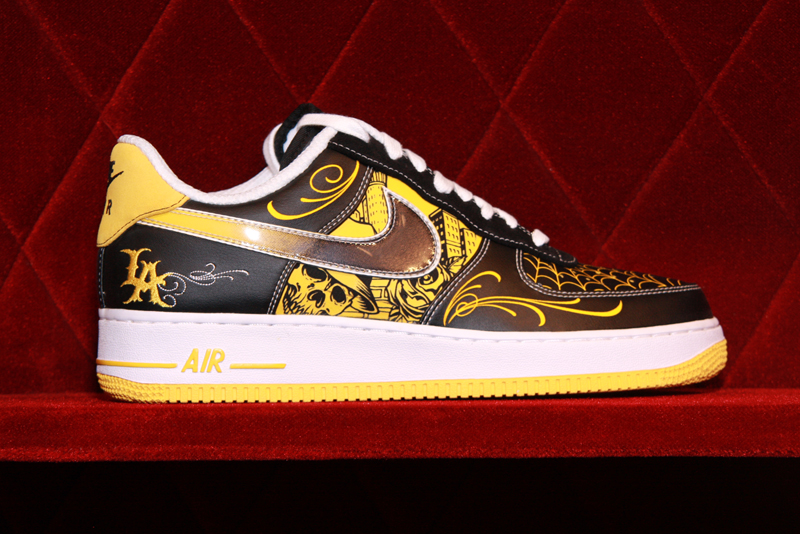
Our $10 bottle of detailer is something I use on the daily. And it is important that it’s quality product, but that we can actually be affordable and be competitive too. It is something that goes way beyond the one-at-a-time tattoos. No matter how good you get at tattoos, you can only do them one at a time. So this hits a global reach; that’s what’s exciting to us.
Lastly, were there any advancements you made, using your life experience and evolution as a street artist, to actually physically improve this product?
Yeah, one of the things we asked Turtle Wax for was a [more sensitive and accurate] spray paint-inspired nozzle for the tire shine, because there’s so many different tips with the graffiti, right? So that’s something we want to expand on is being able to have different type of tips for different types of applications, or different type of widths you might need to spray.
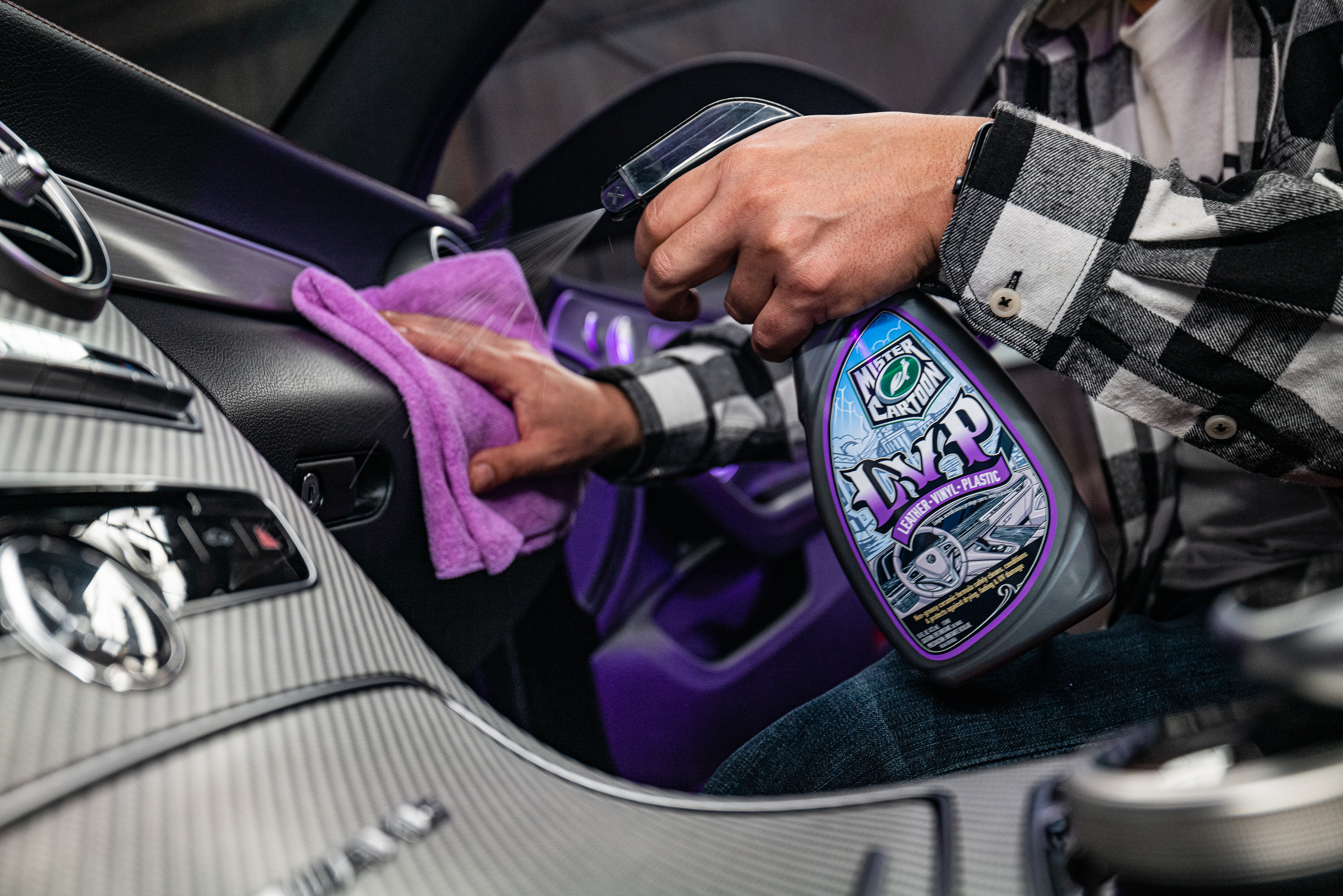
Another is bringing back the white wall cleaner. Other companies are not thinking about those type of things — but we have classic Impalas, so we have white walls on a lot of our cars. And then we have gum walls on our bikes. Some people are rocking red and blue walls on their cars to match their paint jobs. There’s all these different [custom needs] coming out, so we wanted to bring a product in that we see there’s not a lot of attention paid towards.
Lastly is just our approach to advertising will be way different. The cars we sponsor are different, the people that’ll be in our ads will stand out. Definitely more inked and diverse. So it’s bringing our streetwear knowledge and that stuff over to this other world, which we feel needs us.
Follow Deputy Editor Nicolas Stetcher on Instagram at @nickstecher and @boozeoftheday.
